Living full-time in a small RV is actually pretty doable and can make life feel simpler and more flexible. Tiny RVs pack a lot of comfort and style these days, making them a clever pick for adventure lovers, solo travelers, couples, and even remote workers.
I want to share everything I’ve learned about picking compact RVs that are efficient, easy to live in, and ready for year-round adventure.
Why Go Small? Benefits Of Compact RVs For Full-Time Living
Small RVs aren’t just about squeezing into tight spaces. These rigs bring cost savings, simpler driving, and less stress about where you can camp. Smaller models usually cost less, from upfront prices to maintenance and fuel, so you save money right from the start. Driving and parking are far easier, too. No more sweating every sharp turn or small parking lot. Even back roads and city streets become less intimidating.
Many campgrounds set size limits for RV spots, and smaller rigs almost always get more options. If you ever want to boondock or visit national park campgrounds, a compact RV is often the only way in. The simple layout of smaller models invites you to declutter and minimize, which frees up space in your life for experiences instead of stuff.
If you like to explore quirky towns or scenic byways, smaller RVs definitely fit the bill. And let’s be honest, it’s way easier to give your home on wheels a good clean when it’s not a bus on the inside. All of these benefits keep everyday RV life lighter and less complicated.
Our Experience With a Small RV For Full-Time RV Living
In 2015 we bought a small Class C RV and traveled full-time in in for three years. It was very comfortable and easy to travel with: easy to drive, park, maintain, and it had no height restrictions.
From 2018 on, the RVs kept getting larger up until 2023 when we bought a forty-one-foot motor home. It had all the creature comforts, electronics, and bells and whistles. But, with all that we lost ease of travel due to its length, height, and turning radius. It required larger RV park sites to fit its length and width.
Due to that and other repetitive service issues, we got rid of it nineteen months later. We have been out on the road full time since 2008! We decided that as we get to the sunset of our years, simplicity in our full-time RV life was now what we required.
We have always loved Airstream RVs and have had many happy clients who owned them. So we decided to pursue that route, knowing that getting all our stuff into a thirty-foot Airstream would be a challenge!
Well, here we are nine months later, and it is working out just fine! Our favorite thing is no more stupid problematic slideouts: they leak, suffer from wind issues, and often fail to operate.
Our Airstream is comfortable, has all the needed niceties, is well-built, easy to tow, and has so many less travel concerns then our previous behemoth RVs. We have lots of posts on our website about Airstream life if you are interested in the brand. But a word of caution: they are pricey compared to other trailer manufacturers.
Key Features To Look For In A Small RV
I always recommend taking the time to think through the essentials you can’t live without, as well as the features that make any small RV truly livable. Square footage matters, but so does smart design. Here are a few things I look for before committing to a full-time tiny rig:
- Multiuse furniture: Sofas that convert into beds or hidden storage under dinettes help maximize limited space.
- Efficient kitchen setup: A two-burner stove, compact fridge, and a real sink make daily cooking more comfortable without taking up the whole cabin.
- Wet bath or split bath: Small RVs often come with creative bathrooms; some are full wet baths, while others split the shower from the toilet.
- Lots of windows: Natural light makes a compact space feel less cramped and keeps air circulating fast.
- Insulation and heating: For year-round living, solid insulation and a reliable heat source (propane furnace or electric) keep things comfortable in any climate.
- Quality storage: Overhead cabinets, outside compartments, and even slideout pantries mean your stuff stays organized, not scattered.
- Tech upgrades: Prewired solar, USB ports, or smart power inverters are handy for digital nomads and travelers who work from the road.
When you see how cleverly some of these features are built into a space, it’s really impressive what can fit inside these rigs without ever feeling like a shoebox. Designers are always cooking up new tricks, like furniture that folds into walls or panoramic windows that create the illusion of extra room.
Best Small RV Types For Full-Time Living
Compact RVs come in several shapes, each with its own pros and quirks. Here’s a breakdown of the most popular types for full-time living, along with a few top picks in each category:
Class B Camper Vans
Class B vans are built on a van chassis, so they drive just like a regular van but are fully self-contained. They often fit under 22 feet, and many have full wet baths, kitchens, and sleeping setups. Famous brands like Winnebago, Roadtrek, and PleasureWay lead the pack here.
The Winnebago Travato and Roadtrek Zion both mix comfort and versatility, making them favorites for digital nomads or solo wanderers who value flexibility and stealth camping. Compact vans also tend to get better gas mileage and allow you to blend in when parking in towns or cities.
But, beware! They have a much higher price tag than a similar square footage travel trailer.
Small Class C Motorhomes
Class C RVs usually have a cabover bunk and more living space, even in smaller lengths. Options like the Thor Gemini and Coachmen Freelander keep things under 25 feet but provide slightly more elbow room. Class Cs are convenient for those who want a bit more space but don’t want to haul a trailer. The cabover area also doubles as extra sleeping or storage space, making these a smart choice for small families or couples who love relaxing with a movie at night.
Compact Travel Trailers
Travel trailers let you unhitch and use your tow vehicle independently. Models like the Casita Spirit, Scamp 16, and the Airstream Bambi are surprisingly livable for their small size. Some, like the Oliver Legacy Elite II, offer really solid insulation for all-season use. This style is great for anyone with a tow-capable SUV or truck and who likes having a “base camp.” The separation between your vehicle and your living space adds flexibility and gives you more freedom to explore the area around your campsite.
Teardrop Trailers & Micro Campers
For the adventurous minimalist, teardrops and micro campers like the nuCamp TAB or Little Guy Mini Max create a cozy, efficient living setup perfect for one or two people. Cooking, sleeping, and storage are all streamlined, and the whole unit is often light enough to be towed by a compact SUV. These campers can access places bigger rigs can’t, and their simple design makes them low maintenance and easy to handle, even for folks new to RVing.
Living Full-Time: What To Expect In A Small RV
Even with all the upgrades and efficient layouts, living in a space of less than 25 to 30 feet full-time will feel different from living in a traditional home. You’ll adjust to shedding clutter, spending more time outdoors, and getting creative with storage.
Letting go of extra stuff is usually the first (and biggest) step. I’ve found the process is kind of freeing after the first big purge. Using every nook for storage becomes second nature. Keeping things tidy pays off quickly, since there isn’t much space to spread out.
The weather also becomes a bigger part of your routine. Rainy days or cold weather might mean spending more time in a small space, so it’s smart to set up an outdoor canopy or extra seating for when the sun comes back out.
Utilities like water, power, and wastewater take on new importance. Small tanks need more frequent fills and dumps, and power use needs regular tracking, especially when using solar or boondocking. Most people manage these with apps, checklists, or just building good habits.
Building an outdoor “room” with a mat, folding chairs, and maybe a portable grill makes your living space feel twice as big. I always bring along a string of LED lights and a collapsible table for a bonus outdoor workspace. Plus, finding creative ways to step up comfort with weather protection or privacy screens can take your outdoor space up a notch in any setting.
Tips For Making Small RV Living Comfortable Year-Round
I’ve picked up a few tricks that keep small RV life fun and cozy, no matter the season. First, focus on insulation. Window coverings and thermal curtains can help a lot in both heat and cold. If you’re planning on using your RV year-round, a model with double-pane windows and heated storage tanks is worth checking out.
Organization matters more than ever. Collapsible kitchenware, space-saving containers, and built-in organizers prevent clutter from piling up. A shoe rack near the door or hooks for jackets and bags keep the entrance clear and your stuff right where you need it.
Best bedding for small RVs is lightweight but warm, down quilts or synthetic blankets that pack small but keep out the chill. A good, small space-friendly mattress topper can turn a basic RV mattress into something you actually sleep well on. Don’t forget airflow in summer; fans and vent covers are pretty handy and keep things cool. Blackout shades can also help keep your RV cooler while giving you better sleep at night.
Whenever possible, stay in places where you can spend good chunks of time outdoors. Even a campground picnic table can be a game-changer after a rainy week inside. And if you’re winter camping, look into heated floor mats, which are a small, easy upgrade that makes chilly mornings a lot more comfortable.
Things To Consider Before Buying A Small RV
A few smart questions up front save plenty of headaches later. Start by being honest about how much space you actually need. If you plan to work remotely, prioritize a comfortable spot for a laptop and power outlets. If you’re traveling with pets or a partner, check that there’s enough room for both quiet time and storage for everyone’s basics. Stepping into the RV and picturing a full day helps you imagine what works and what doesn’t for your lifestyle.
Check weatherproofing and insulation, especially if you plan on winter stays. Some small RVs are built just for fairweather camping, while others can tackle chilly nights without breaking the bank for heating.
Maintenance requirements can differ. Research tank sizes, roof sealing, and the engine or tow weights if you plan to drive rugged backroads.
If you plan to live off-grid, make sure your model can handle solar panels, lithium batteries, and water-saving features. Prewired models and rigs that easily upgrade to more solar or bigger batteries are worth checking out.
Finally, take a walk around the inside and outside. Sit, move around, and imagine a regular day, from morning coffee to washing up after dinner. The best small rigs feel right the moment you walk in. Don’t just rely on a floorplan diagram online; check out a unit in person if you can to get a feel for the flow and comfort.
Advanced Small RV Living Hacks
Once you settle into compact RV life, small upgrades and daily routines make a big difference. Use bins with labels for quick access to gear and snacks. Tension rods and stackable drawers add a ton of easy storage to awkward nooks. Bungee cords or Velcro help keep stuff from sliding when you’re on the road. Packing cubes for clothing can also save space and keep your clothes sorted by season.
Managing humidity means opening windows for airflow and using a portable dehumidifier in rainy climates. Bringing in a folding bike or scooter makes errands and quick sightseeing runs super easy without taking up much space. Try magnetic spice racks or wall-mounted holders for kitchen storage to use space that would otherwise be wasted.
If you work remotely, a cellular router or booster and a mini foldout workstation can boost productivity, even in rugged or rural camping spots. For cooking, a small Instant Pot or portable induction cooktop adds more choices without crowding the counter. Don’t overlook a simple, portable coffee maker—sometimes that morning ritual brings a lot of comfort to small-space living.
For longer stays, outdoor rugs, string lights, and even a potted herb plant make your little camp feel like home. Embracing seasonal decorations or changing up your outdoor lighting can also help keep things feeling fresh and fun.
Frequently Asked Questions
Here are some practical answers for people new to living full-time in a small RV.
Q: Can you live full-time in a small RV comfortably?
A: Absolutely. It takes some adapting and smart storage, but lots of people live happily in RVs under 30 feet. Organization and getting outdoors as much as possible make things feel roomier and less cramped.
Q: How do you stay warm or cool in a small RV?
A: Many small RVs now come with upgraded insulation. When it’s cold, use thermal curtains and a propane furnace or portable heater. In hot weather, vent covers, fans, and parking under shade keep things cooler. Picking the right model for your climate helps a lot.
Q: What’s the best small RV for digital nomads?
A: Class B camper vans and well-equipped travel trailers top my list. Many of these come with solar panels, lots of outlets, and quality batteries as upgrades. Look for prewired setups and a comfortable work spot.
Q: How much does it cost to maintain a small RV?
A: Maintenance is usually lower than for bigger rigs. Plan for routine oil changes, tire rotations, and regular roof and seal checks. Most small RV owners spend less on fuel and campground fees, thanks to the smaller size as well.
Q: Where can you camp in a small RV?
A: Just about anywhere. State parks, national parks, and private RV resorts often have sites too small for big rigs but perfect for you. Being small even opens up more boondocking options on public lands. Some cities also allow overnight parking for small RVs in certain parking lots. Always check local rules.
Ready For Your Compact RV Adventure?
Living full-time in a small RV can be rewarding; simpler chores, more adventure, and usually less stress. Whether you choose a camper van, micro trailer, or a mini Class C, today’s compact rigs offer comfort and style that work for all kinds of travelers.
Downsizing isn’t always easy at first, but the freedom and mobility make it worth it for many people I’ve met on the road. If you crave new views out your window and spontaneous exploration, a small RV setup might be the perfect fit for you.
For more RV tips, tricks, and stories, stick around or check out more articles across our website. If you have questions or want to share your own tiny RV setup, drop a comment. I love hearing how others make compact RV life work for them. Sharing our ideas helps everyone get a boost from tried-and-true solutions for living small but living well.
Want to run a business while RVing full-time? Check out achievewithhoward.com for ideas!

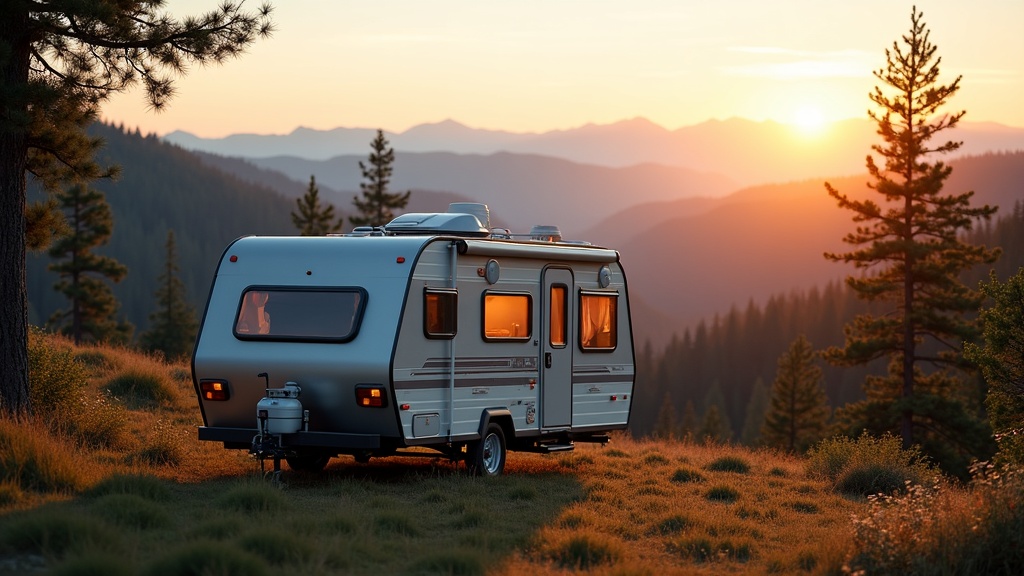
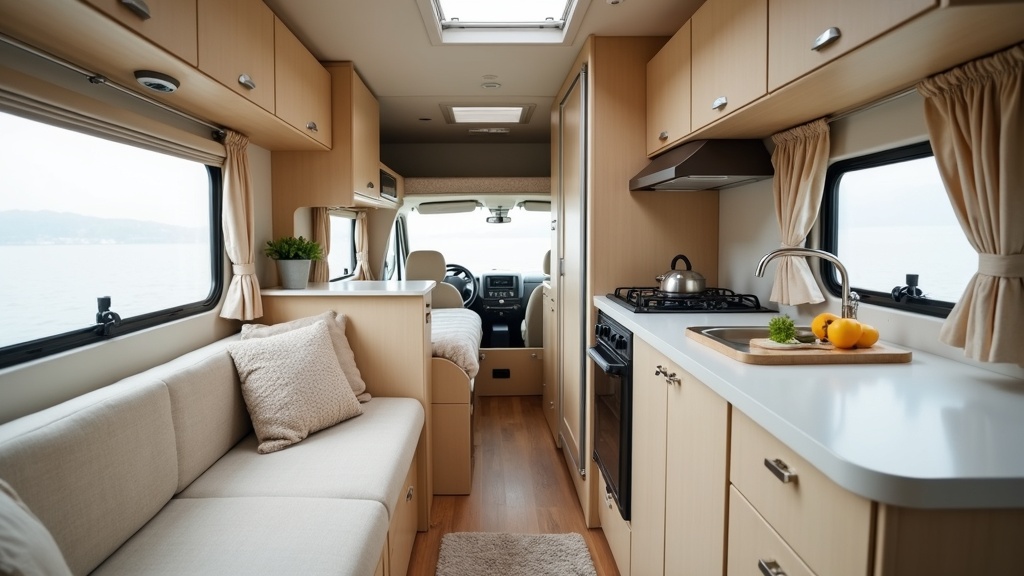
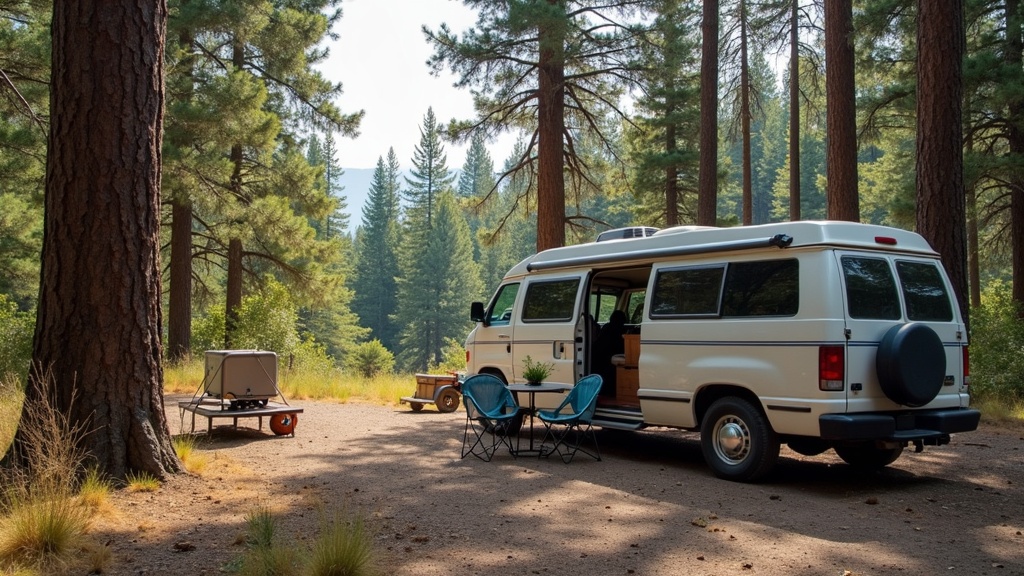
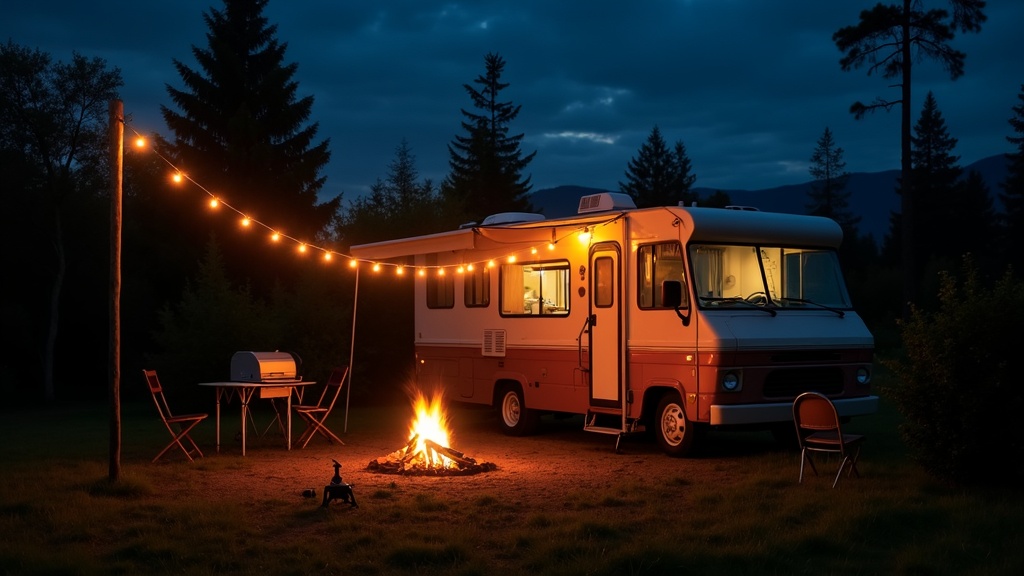
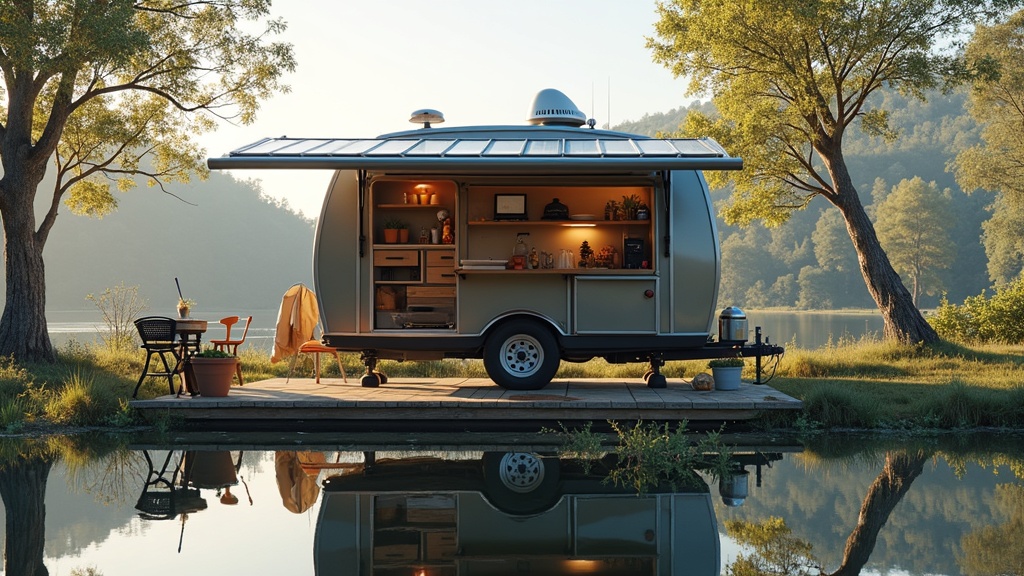

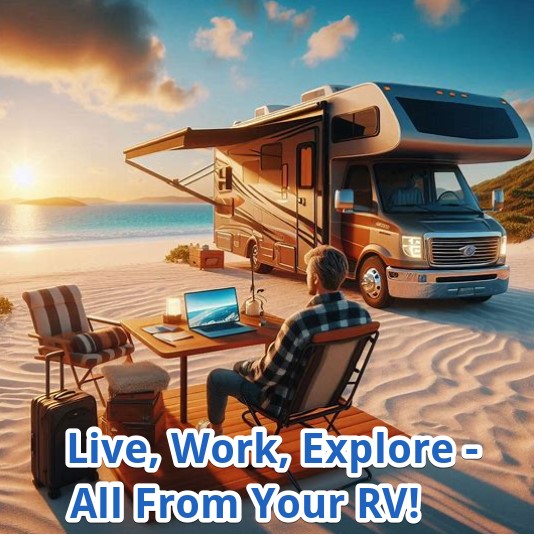
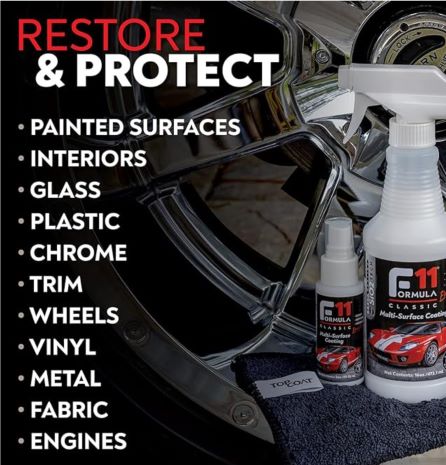
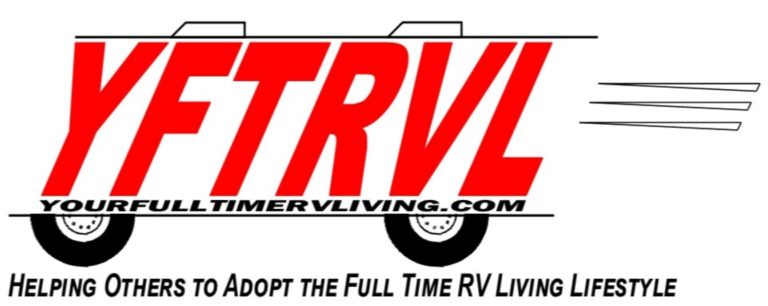



Recent Comments